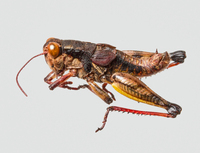| |
Family (Alpha): | |
| View | Acrididae Members:
| NC Records |
|---|
Melanoplus sylvestris Morse, 1904 - Woodland Short-winged Grasshopper |
 |
|
|
|
|
|
Image Gallery for Melanoplus sylvestris - Woodland Short-winged Grasshopper
|
 | Recorded by: J. Edward Corey III; B. Bockhahn; S. Koch
Stokes Co.
Comment: Determined by J. Hill |